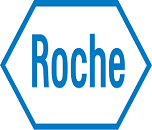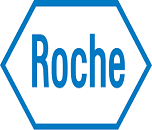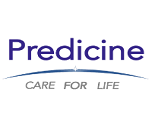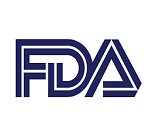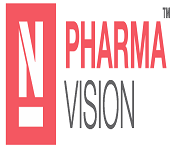Theme: Latest discoveries and innovations in the field of Biomarkers & Clinical Research
Biomarkers 2017









 Conference Series LLC Ltd Conferences invites all the participants across the globe to attend ‘10th World Congress on Biomarkers and Clinical Research’ during October 18-20, 2017 in Baltimore, USA which includes prompt Keynote presentations, Oral talks, Poster presentations, Exhibitions & Sponsorship.
Conference Series LLC Ltd Conferences invites all the participants across the globe to attend ‘10th World Congress on Biomarkers and Clinical Research’ during October 18-20, 2017 in Baltimore, USA which includes prompt Keynote presentations, Oral talks, Poster presentations, Exhibitions & Sponsorship.
Biomarkers 2017 will mainly focus on the exploring new ideas in Biomarkers, Cancer Biomarkers, Molecular Biomarkers, types of biomarkers, Biomarkers in Clinical Research & Development, Biomarkers in drug discovery, biomarkers disorders, Biomarkers in Pathology, Functional genomics and cytogenetic biomarkers and its clinical research and development, Omics technologies in discovery and its validation, biomarkers of exposure response and susceptibility, techniques to maximize biomarker identification, biomarkers Nano science.
Conference Series LLC Ltd, the host of this conference is comprised of 3000+ Global Events with over 600+ Conferences, 1200+ Symposiums and 1200+Workshops on diverse Medical, Pharmaceutical, Clinical, Engineering, Science, Technology, Business and Management field is organizing conferences all over the globe. Biomarkers conferences include scientific keynote lectures, symposia, workshops, exhibitions with the support from Oncology Society and American Oncology Society.
Track 1: Biomarkers Ltd
A biomarker, or natural marker, for the most part alludes to a quantifiable pointer of some organic state or condition. The term is additionally infrequently used to allude to a substance the nearness of which demonstrates the presence of a living being. Encourage, life structures are known to shed one of kind chemicals, including DNA, into the earth as proof of their nearness in a specific area. Biomarkers are regularly measured and assessed to look at ordinary natural procedures, pathogenic procedures, or pharmacologic reactions to a restorative mediation. Biomarkers are utilized as a part of numerous logical fields.
Track 2: Cancer Biomarkers
Growth (Cancer) biomarkers are utilized to distinguish the characteristic course of a tumour and are utilized to evaluate odds of creating disease. Biomarkers in growth screening assume an essential part in tumour identification and hazard evaluation to lessen malignancy passing’s. Tumour biomarkers are utilized to distinguish malignancy advancement and movement. Uterine cervical growth, endometrial disease, trophoblastic neoplasms and ovarian tumour are gynaecologic malignancies for which tumour markers are in clinical utilize. Viable disease biomarkers are utilized to decrease malignancy death rates by encouraging determination of tumours at early stages. Tumour biomarkers can likewise be utilized as a part of analysis, hazard evaluation and repeat of malignancy.
Types of cancer biomarkers
- Uses of biomarkers in cancer research
- Lung cancer biomarkers
- Prostate cancer biomarkers
- Breast cancer biomarkers
- Advanced biomarkers for Cancer
Track 2.1: Cancer Bioinformatics
Cancer bioinformatics is application of bioinformatics tools in the field of cancer treatment. Clinical bioinformatics an emerging study combining bioinformatics, clinical informatics, information technology, medical informatics, mathematic together which is related to cancer information. Cancer bioinformatics may be considered to be one of the critical elements which address clinical challenges in early diagnosis, predictive prognosis of patients with cancer. The specificity, applicability, and integration of methodologies, computational tools, Cancer Clinical Trials Data Management Software, and databases which can be used to explore the molecular mechanisms of cancer and identify and validate network biomarkers, novel biomarkers, and individualized medicine in cancer. PAM50 centroid-based genomic predictors for breast cancer treatment plans and providing the uncertainty information in a usable way.
- Bioinformatics and Cancer
- Breast Cancer Now Tissue Bank bioinformatics portal (BCNTBbp)
- Pancreatic Expression Database (PED)
- SEARCHBreast
- SNPnexus
- O-miner
- Uses of biomarkers in cancer medicine
Track 3: Molecular Biomarkers
A biomarker can be anything that can be precisely measured as a pointer of ordinary organic working, pathogenic ways or a medication reaction to a restorative medication intercession. Atomic biomarkers are the biomarkers for the most part in sub-atomic frame. Atomic biomarkers partake in different purposes, including illness analysis and visualization, forecast and computation of treatment reaction, and wellbeing assessment. The atomic biomarkers are only being created and approved to be utilized as a part of medication improvement, and used to bolster endorsement of medication items.
Track 3.1: Molecular Biomarkers Discovery
Biomarker disclosure requires exceedingly guaranteed distinguishing proof of a biomarker particle with constant quantitative data to demonstrate which proteins are changing to a factually correlated degree in light of infection. The revelation of atomic biomarkers has grown new systems beginning from the underlying strides. In the main phase of biomarker disclosure procedures, examination relies on mass spectrometry systems to make unprejudiced, semi quantitative investigation of changes amongst solid and sick states. The slant of plausible sub-atomic biomarkers produced in the revelation stage is to be further substantiated because of the high false positive rate. It is done through supplemental more focused on and quantitative mass spectrometry procedures, for example, immuno fondness peptide enhancement.
New procedures for disclosure
- Protein biomarker revelation
- Clinical biomarker progresses
- Biomarkers for pediatric maladies
- Clinical examination of NGS tests
- Mass spectrometry based biomarker revelation
Track 4: Biomarkers for Immuno-Oncology
Disease immunotherapy is the utilization of the safe framework to treat tumor. Immunotherapies can be ordered as dynamic, uninvolved or half and half. These methodologies abuse the way that growth cells frequently have atoms on their surface that can be distinguished by the resistant framework, known as tumor-related antigens, they are regularly proteins or different macromolecules (e.g. sugars).
Dynamic immunotherapy guides the resistant framework to assault tumor cells by focusing on TAAs. Latent immunotherapies upgrade existing against tumor reactions and incorporate the utilization of monoclonal antibodies, lymphocytes and cytokines.
Tracks 4.1: Personalized Immunotherapy
Powered with advances in genomic advances, customized oncology guarantees to develop disease treatment and target beforehand undruggable space. Improvements in customized tumor immunizations, supportive T-cell treatments, and biomarker-driven immuno-oncology clinical trials, are empowering the up and coming era of disease treatment. Cambridge Healthtech Institute's Second Annual Personalized Immunotherapy meeting unites clinical immuno-oncologists and thought pioneers from pharmaceutical and biotech organizations, and driving scholastic groups to share research and contextual analyses in actualizing understanding driven ways to deal with utilizing the safe framework to beat malignancy.
Tracks 4.2: Companion Diagnostics For Immunotherapy
The sidekick and correlative diagnostics for safe regulating treatments are entangled and require another methodical approach. Cambridge Healthtech Institute's Third Annual Companion and Complementary Diagnostics in Immuno-Oncology meeting is intended to unite clinical immuno-oncologists, analysts from pharmaceutical and biotech organizations, and individuals from the research facility medication group to talk about the hidden systems of malignancy immunotherapy, its prescient biomarkers and existing and developing clinical examines planning to enhance persistent results.
Tracks 4.3: Biomarkers to guide Immunotherapy
With late endorsements for numerous restorative antibodies that piece cytotoxic T lymphocyte related antigen 4 (CTLA4) and modified cell demise protein 1 (PD1) in melanoma, non-little cell lung tumor and kidney malignancy, and extra safe checkpoints being focused on clinically, many inquiries still remain in regards to the ideal utilization of medications that square these checkpoint pathways. Characterizing biomarkers that anticipate helpful impacts and unfavourable occasions is an essential order, highlighted by late endorsements for two PDL1 indicative tests. Here, we examine biomarkers for hostile to PD1 treatment in light of immunological, hereditary and virological criteria. The one of a kind science of the CTLA4 insusceptible checkpoint, contrasted and PD1, requires an alternate way to deal with biomarker improvement. Component based bits of knowledge from such reviews may manage the outline of synergistic treatment blends in view of insusceptible checkpoint bar.
Tracks 4.4: Clinical Trials for Cancer Immunotherapy
Quick improvements in growth immunotherapy are making chances to put up new blockbusters for sale to the public and requiring new clinical advancement procedures for quickening immuno-oncology clinical trials. Cambridge Healthtech Institute's Inaugural Clinical Trials for Cancer Immunotherapy meeting will concentrate on contextual investigations from continuous IO clinical trials, procedures for blend treatment clinical advancement, ID and approval of prescient and prognostic biomarkers for growth immunotherapy, and novel advances and methodologies to quicken IO clinical improvement.
Track 5: Biomarkers in Clinical Research & Development
The Biomarkers discovers its important application in the field of Clinical innovative work by contextual investigation and information administration as obvious through Biomarker meetings. The Bioethics and protected innovation right builds up the standards and standard of direct of theory concerning clinical approval of biomarkers. The fuse of biomarker in clinical trials for different illness conditions will advance a legitimate indicative and remedial approach using even the medicinal gadgets to recognize clinical biomarkers. Right now this is the blasting business. A large portion of the presumed associations like Pfizer, Parexel and Quintiles are into clinical innovative work. The organizations, doctor's facilities and clinical research associations are the problem areas for directing clinical research with its development rate expanding exponentially by an expected 75B$ by 2016.In clinical innovative work, clinical biomarkers are utilized as a part of contextual analysis and information administration, clinical trials and in therapeutic gadgets.
Track 6: Biomarkers and Drug Discovery
The part of Biomarkers in medication revelation and advancement is to comprehend the pathophysiology of ailment. Biomarkers can be a clinical instrument for medication disclosure and improvement by affirming the adequacy and security to the correct patient. Biomarkers can be utilized as a part of comprehension the instrument of medication.
Track 7: Biomarkers and Pathology
One imperative part of the part of Pathology in the assessment of bosom malignancy is biomarker trying, particularly the precise appraisal of the estrogen receptor (ER), progesterone receptor (PR), and Her2 status of a patient's bosom tumor. Biomarkers can be prognostic, prescient, or both. Prognostic biomarkers are free measures of forecast to such an extent that the nearness or nonappearance of the biomarker is connected with a patient's general clinical result (i.e., danger of repeat and mortality).
Track 7.1: Molecular Pathology
Molecular pathology is an emerging discipline within pathology which is concentrated in the study and conclusion of ailment through the examination of molecules within organs, tissues or bodily fluids. Molecular pathology imparts a few parts of practice with drug development, disease management strategies and is sometimes considered a crossover discipline. It is multi-disciplinary in nature and concentrates primarily on the sub-minute parts of diseases. A key consideration is that more accurate diagnosis is possible when the diagnosis is based on both the morphologic changes in tissues and on molecular testing of diseases like cancer. In this sub topics Molecular pathology is very useful in drug development and cancer. There are 5 associations and societies and the main association for Molecular Pathology is the Association of Molecular Pathology in USA. 78 universities are working on Molecular Pathology. Companies and hospitals around USA are associated with pathology. NIH has released $197,088 for Molecular Pathology research.
Track 7.2: Clinical Pathology
Clinical Pathology is a medical specialty that is concerned with the diagnosis of disease based on the laboratory analysis of bodily fluids. Clinical Pathology is one of the major classifications of Pathology. Clinical Pathology is accomplished through practical diagnosis of disease based on the laboratory analysis. Clinical Pathology so far covers the diagnostic testing, Implications of cancer patients, Prognostic value, clinical and non-clinical toxicology testing, Clinical finding of cancer and other disease. It emerges other subtopic like Neuropathology. The following topics are the latest research going on in clinical Pathology.
Track 8: Biomarkers for Disorders
Biomarkers are the trademark natural quantifiable indictors for the different issue if happening in strange levels. These are utilized as quantitative elements for neurological issue, hereditary scatters, metabolic disarranges, cardiovascular clutters and natural mistakes. The present time is concentrating on the tumor examine using biomarkers as indictor of infection conditions. The lung disease biomarkers and biomarkers for bosom malignancy are comprehensive of qualities, chemicals, proteins and cell surface entitles. Enrolling a compound yearly development rate of 14.60% from 2011 to 2018, the market for oncology biomarkers was esteemed at $13.16 billion in 2011 and is relied upon to be worth $29.78 billion in 2018.Biomarkers are additionally utilized as a part of diagnosing and treating different illnesses and scatters like Neurological issue, Genetic issue, Metabolic issue, Cardiac issue, Inborn blunders, Lung disease and Breast malignancy.
Track 9: Biomarker Discovery, Verification & Validation
As a rule, biomarker inquires about takes after a continuum that starts with disclosure and continues through approval to the possible execution of biomarkers in a clinical setting. Biomarker disclosure requires high certainty recognizable proof of biomarker applicants with concurrent quantitation data to demonstrate which proteins are changing to a factually significant degree in light of infection. Biomarker competitors distinguished in disclosure should be approved utilizing bigger example sets covering an expansive segment of patient companions. To maintain a strategic distance from a potential bottleneck connected with taking countless to approval, a confirmation step is utilized to screen potential biomarkers to guarantee that lone the most noteworthy quality leads from the disclosure stage are taken into the exorbitant approval arrange. The check arranges requires a high throughput work process with at least specimen planning that gives both high specificity and affectability. Also, the confirmation stage can affirm that a specific philosophy is reasonable to be utilized as a part of the approval stage.
Track 9.1: Mass spectrometry based biomarker discovery, verification, and validation
In its initial years, mass spectrometry (MS)- construct proteomics centered in light of the classifying of proteins found in various species or diverse tissues. By 2005, proteomics was being utilized for protein quantitation, normally in light of "proteotypic" peptides which go about as surrogates for the parent proteins. Biomarker disclosure is normally done by non-focused on "shotgun" proteomics, utilizing relative quantitation strategies to decide protein expression changes that connect with ailment (yield given as "up-or-down direction" or "crease increments"). MS-based systems can likewise perform "outright" quantitation which is required for clinical applications (yield given as protein fixations). Here we portray the contrasts between these strategies, figures that influence the exactness and precision of the outcomes and a few cases of late reviews utilizing MS-based proteomics to confirm malignancy related biomarkers.
Track 9.2: Protein Biomarker Discovery & Validation
Oncology biomarker research is about interpreting progress made in distinguishing pertinent biomarkers in essential research into malignancy therapeutics that possibly advantage patients. Our approach utilizes mass spectrometry as the revelation motor to find new oncogenic or tumorgenic biomarkers. Growth look into methods utilizing mass spectrometry can be utilized to find and approve biomarkers that can be utilized for early identification of malignancy, proteomics in tumor prognostics, proteogenomics and checking reaction to treatment.
Track 10: Personalized Medicine and Data Analysis
Recently there has been enhanced and advanced biomedical technology such as high-throughput molecular imaging and microarrays to monitor SNPs, gene and protein expressions, to provide exhaustive situations for individuals. The biological and medical status from such data sets, which are viewed as biomarkers in a wide sense to help to do identification, association, and prediction studies for phenotypes such as cancer subtypes, prognosis, treatment responsiveness, and adverse reactions for personalized medicine.
Track 11: Cancer Research
Growth research is fundamental research into tumor to recognize causes and create methodologies for aversion, analysis, treatment, and cure. Growth investigate ranges from the study of disease transmission, sub-atomic bioscience to the execution of clinical trials to assess and think about utilizations of the different malignancy medicines. These applications incorporate surgery, radiation treatment, chemotherapy, hormone treatment, immunotherapy and consolidated treatment modalities, for example, chemo-radiotherapy. Beginning in the mid-1990s, the accentuation in clinical disease explore moved towards treatments got from biotechnology research, for example, tumor immunotherapy and quality treatment.
Track 12: Clinical Research
Clinical research is a branch of social insurance science that decides the wellbeing and adequacy (viability) of solutions, gadgets, analytic items and treatment regimens expected for human utilize. These might be utilized for counteractive action, treatment, finding or for calming side effects of a sickness. Clinical research is unique in relation to clinical practice. In clinical practice built up medicines are utilized, while in clinical research confirmation is gathered to set up a treatment.
Track 12.1: Innovations in Pre-clinical Research
Pre-clinical research in like manner named pre-clinical audits and nonclinical studies is a period of research that begins before clinical trials, and in the midst of which basic credibility, iterative testing and drug security data is assembled. The rule targets of clinical research audits are to choose the shielded estimations for First-in-man study and start to overview thing's security profile. Things may fuse new or iterated or like-kind helpful contraptions, medications, et cetera.
Track 12.2: Design of Clinical Studies
Clinical audit arrangement is the meaning of trials and tests, and moreover observational surveys in helpful, clinical and diverse sorts of research including individuals. Clinical research are typically driven in four phases, each stage is considered as specific trial and, after complete of a phase, analysts are required to show their data for underwriting from the FDA before continuing to the accompanying stage. By sharing in clinical trials, individuals can't simply expect a more dynamic part in their own specific social protection, yet they can in like manner get to new solutions and help other individuals by adding to restorative research. Sorts of Study Designs Meta-Analysis, Systematic Review, Randomized Controlled Trial, Cohort Study, Comparative Study, Case-control Study, Cross-sectional audit, Case Reports and Series, Animal Research Studies, Test-tube Lab Research.
Track 13: Clinical Trials
Clinical trials are tests done in clinical research. Such imminent biomedical or behavioral research thinks about on human members are intended to answer particular inquiries regarding biomedical or behavioral mediations, including new medications, (for example, novel antibodies, drugs, dietary decisions, dietary supplements, and medicinal gadgets) and known intercessions that warrant additionally study and examination. Clinical trials produce information on security and viability.
Track 13.1: Conducts of Clinical Trials
Clinical trials also known as clinical research studies that follow a pre-defined plan or protocol. Researchers design clinical trials (Clinical study designs) to answer specific research questions related to a medical product. Clinical trials, particularly those looking at new drugs, often start after successful animal studies. The most promising treatments then move into clinical trials.
Track 14: Translational Biomarkers & Diagnostics
Translational prescription regularly alluded to as translational science, (of which it is a frame) is characterized by the European Society for Translational Medicine (EUSTM) as an interdisciplinary branch of the biomedical field bolstered by three primary columns: benchside, bedside and group. The objective of TM is to consolidate disciplines, assets, mastery, and strategies inside these columns to advance upgrades in aversion, analysis, and treatments. As needs be, TM is a very interdisciplinary field, the essential objective of which is to mix resources of different natures inside the individual columns keeping in mind the end goal to enhance the worldwide social insurance framework altogether.
Track 15: Biomarkers & its Diseases
Disease-related biomarkers give an indication of the probable effect of treatment on patient (risk indicator or predictive biomarkers), if a disease already exists (diagnostic biomarker), or how such a disease may develop in an individual case regardless of the type of treatment (prognostic biomarker). Predictive biomarkers help to assess the most likely response to a particular treatment type, while prognostic markers show the progression of disease with or without treatment, some diseases are:-
- Autoimmune disease
- Alzheimer's disease
- Cardiovascular disease
- Neurological Disorders
- Immunological Disorders
Track 16: Functional Genomics and Cytogenetic Biomarkers
The branch of genomics that determines the biological function and complex association of the genes and their products depicts the functional genomics. The measurable degree of these parameters through various processes and equipment inclusive of Next generation sequencing, Personalized genome sequencing and mi-RNA sequencing utilizing cellular entities to predict SNP biomarkers, immuno fluorescent biomarkers, oxidative stress biomarkers, si-RNA and mi-RNA will aid in better understanding of the disease outcome. The cytogenetic biomarkers are a feasible diagnostic tool to detect DNA and chromatin damage.
Track 17: Omics Technologies in Biomarkers Discovery and Validation
Biomarkers play a critical role in disease diagnosis and treatment, especially for the early detection of cancer, to enable screening of asymptomatic populations. Recent omics technologies, such as Transcriptomics, genomics and proteomics approaches besides Metabolomics are accelerating the rate of biomarker discovery. The incorporation of techniques like microarray data analysis, computational biology, data mining methods, Transcriptomics and profiling techniques are playing a crucial role in the validation of biomarkers. Since the Human Genome Project was completed in April 2003, genome-wide association studies (GWAS) have contributed toward a greater understanding of the genetic basis of complex diseases and advances in high-throughput technologies. This has enabled researchers to rapidly map the genome of vertebrates, invertebrates and pathogens through cost-effective methods.
Track 18: Techniques to Maximize Biomarker Identification
Biomarkers are the existing bimolecular and integral indictors of disease condition of biological systems. The techniques used to identify and maximize the expression of biomarkers include RT-PCR genotyping, molecular imaging and dynamics, biochemical assay and profiling, immunological techniques and chromatographic techniques. A wider approach towards identification of biomarkers lies in the proteomic approach besides utilizing biosensors as a compatible tool for evaluation of biomarker levels in the biological systems. Most of the company’s focus is on generating cost effective durable profiling techniques and equipment to quantify biomarkers within a short span of time. Johnson & Johnson, GlaxoSmithKline Plc., GE Healthcare, Affymetrix Inc.
Track 19: Biomarkers and Pharmacology
In the biomarker pipeline, the technologies that will enable the use of biomarkers in drug discovery and development vary depending on the research stage. The second stage, biomarker validation and clinical assay development, depends upon extremely sensitive and specific high-throughput immunoassays. The single greatest challenge in discovering biomarkers with clinical utility is the sensitivity and specificity necessary to determine that a biomarker is truly positive for disease or disease toxicodynamics, and can be used to detect deviations from normal. The molecular biomarkers conferences provide good exposure in drug discovery. Biomarkers have special applications in the areas of translational medicine, clinical development and safety assessment where they are put through several stages of drug discovery, development and validation.
Track 19.1: Clinical Pharmacology
Clinical pharmacology is the basic science of pharmacology with an added focus on the application of pharmacological principles and methods in the medical clinic and towards patient care and outcomes.
Track 19.2: Environmental Pharmacology
Center is being given to comprehend gene–environment cooperation, medicate environment communication and poison environment association. There is a nearby coordinated effort between ecological science and prescription in tending to these issues, as social insurance itself can be a reason for natural harm or remediation. Human wellbeing and environment are personally related. Interest for more pharmaceutical items may put the general population at hazard through the pulverization of species. The passage of chemicals and medications into the oceanic environment is a more genuine concern today.
Track 19.3: Pharmacogenomics
Pharmacogenomics is the application of genomic technologies to drug discovery and further characterization of older drugs.
Track 20: Case Reports
A case report is an elaborated report of the symptoms, signs, disease diagnosis, treatment, and follow-up of an individual patient usually recorded in medical field. Case reports might comprehend a demographic profile of the patient, but typically mention any unusual or unique occurrences. In this conference case reports on biomarker diagnostics, drug discovery and imaging are discussed in detail in relevance to molecular and cancer biomarkers. Cancer biomarkers conferences are a big platform to study case reports of these in precision.
Track 21: Biomarkers: Entrepreneur Investments Meet
A key ingredient in successful entrepreneurship is self-knowledge. Biomarkers-2017 aims to bring together all existing and budding bio entrepreneurs to share experiences and present new innovations and challenges in cancer community. Each year, over a million companies are started in the world with about 5–10 of them classified as high technology companies. Turning ideas into business ventures is tricky and the opportunity-recognition step is critical in new venture creation. This gestalt in the entrepreneur's perception of the relationship between the invention and final product is refined into a business model that describes how the venture will make money or provide an appropriate return to the potential investors. Cancer science is complex and rapidly changing and requires a specialized knowledge to understand the value of the innovation and its competitive position in the industry. This three day community-wide conference will be a highly interactive forum that will bring experts in areas ranging from Biomarkers to signalling pathways to novel therapeutic approaches to the scientific hub.
Conference Series LLC Ltd cordially invites all the participants across the globe to attend the “10th World Congress on Biomarkers & Clinical Research” during October 18-20, 2017 at Baltimore, USA.
Biomarker congress will enable to put forth the holistic scientific approach to validate the existing and development of novel biomarkers as to better understanding of diseases and diagnosis. The past six conference series of biomarkers meeting have grounded the best possible researchers in the field of biomarkers from diverse scientific disciplines, and so will be the upcoming.
Biomarkers are important for streamlining drug discovery and development. In addition, biomarkers can be widely used as a tool for disease diagnosis, personalized medication in clinical research. Study design and statistical analysis for biomarker research incorporates various tools from bioinformatics. It further involves patient segmentation and stratification by successful integration of diagnostic tools and clinical data annotation inclusive of classification distribution metrics and pattern recognition. The global market for biomarkers in data statistics is estimated at about $2.4 billion in 2011 and further projected to reach $7.6 billion by 2017 registering a CAGR of 18.3% during the period 2007-2017. The organizations involved are Affymetrix, Agilent Technologies, Biomax Informatics, Illumina, Qiagen etc amongst others across the globe.
Conference Series LLC Ltd organizes 3000+ Global events in conference series every year across the globe with support from 1000+ more scientific societies and Publishes 700 Open access journals which contains over 100000 eminent personalities, reputed scientists as editorial board members.
Why to attend???
With individuals around the globe concentrated on finding out about Biomarkers and Clinical Research; this is your best chance to achieve the biggest gathering of members from the Biomarkers and Clinical Research people group. Direct presentations, circulate data, meet with present and potential researchers, make a sprinkle with cutting edge medicines, and get name acknowledgment at this 3-day occasion. Widely acclaimed speakers, the latest procedures, advancements and the most current upgrades in Biomarkers and Clinical Research are the signs of this gathering.
Target Audience:
- Biomarkers and Clinical Research Scientists, Students
- Biomarkers and Clinical Researchers
- Medical Colleges
- Psychiatrists
- Biomarkers and Clinical Research Associations and Societies
- Business Entrepreneurs
- Software developing companies
- Manufacturing Medical Devices Companies
- Cancer Researchers
- Data Management Companies
- Pharmaceutical Companies
- Diagnostics Companies
The global biomarkers market is expected to reach $45.55 Billion by 2020 from $24.10 Billion in 2015, at a CAGR of 13.58% between 2015 and 2020. Increasing healthcare expenditure & R&D spending and the increasing utility of biomarkers for diagnostics are expected to drive the market. Market growth will also be aided by the low cost of clinical trials in developing countries and new initiatives undertaken for biomarker research. On the other hand, the need for high capital investment, low benefit-cost ratio, poorly suited regulatory & reimbursement systems, and the high cost of tests and sample collection & storage are the major factors restraining the growth of this market.
The applications included in this report are diagnostics development, drug discovery & development, personalized medicine, disease risk assessment and other applications. The disease indication segments included in this report are cancer, cardiovascular disorders, neurological disorders, immunological disorders, and other diseases.
Major players in this market include QIAGEN N.V. (Netherlands), PerkinElmer, Inc. (U.S.), Merck & Co, Inc. (U.S.), Bio-Rad Laboratories (U.S.), Enzo Biochem (U.S.), EKF Diagnostics Holdings plc (U.S.), Meso Scale Diagnostics, LLC (U.S.), Singulex, Inc. (U.S.), BioSims Technologies (France), Cisbio Bioassays (France), and Signosis, Inc. (U.S.).
Segment Review:
Diagnostic biomarkers are divided in two major types which include biomarkers of exposure and biomarker of disease. Biomarkers of exposure are an emerging technology of identifying the hazardous chemical level in individual body. These biomarkers enable the diagnosis of abnormal activities to calculate the pre-disease condition. Biomarkers of disease are used in identification of disease condition and also help in validation of clinical trials for novel drug.
Biomarkers market revenues share by segment, 2012 and 2020
Diagnostic biomarker market is growing with development of technologies in clinical laboratory tests, imaging exams, and in recent years biomarker tests are impacting the clinical management of patients. Biomarkers are identified conventionally by analysing the science of pathophysiology and epidemiology, which derive insensitive and nonspecific markers. Diagnostic biomarker technology is expected to transform the scenario of clinical research, medical practice and drug development, as technological advances are changing from conventional approach of pathophysiology/epidemiology to biomarker studies such as genomics and proteomic. The amount of information provided by the biomarker helps in pharmaceutical drug development, diagnosis of critical diseases, and in clinical trial of drugs. The diagnostic biomarker technology provides simple diagnostic treatments to pathologists to perform faster, accurate disease identification, which enables physician to prescribe better treatments for those diseases.
Though as on today there are immense developments in infrastructure for data sharing and analysis such as bioinformatics, the utility is not to its best. Furthermore, there is no standard regulatory framework globally. For example, countries in the European Union and other regions have their own set of regulations, which may be a bigger challenge in conducting transnational research and data sharing. However, the role of biomarkers is increasing with its crucial application in diagnosis of fatal diseases such as cancer and cardiovascular diseases. Biomarkers in these cases enable early diagnosis and are of immense importance in designing effective treatments and progress. Reimbursement issues are being solved with the intervention of regulatory authorities, which is expected to propel the growth of the market for diagnosis at commercial level.
Asia Pacific Market Review:
Heart diseases are the leading cause of death in worldwide and Asia Pacific has the significant share especially in coronary heart disease. Diagnosis for cardiovascular disease is done through conventional methods such as clinical observation, electrocardiogram (ECG) findings. According to data published by ministry of health in China, about 203 million people are suffering from cardiovascular diseases and this number is expected to increase by 73% in 2030. Projected trends in blood pressure, increased cholesterol and active smoking are also increase the number of CVD by an additional 23% which denotes 21.3 million cardiovascular events. Demographic changes such as aging population and lesser younger people is the main driver for increased CVD disease. Biomarker market is expected to increase its presence as biopharmaceutical companies are investing more in Asian countries for drug discovery and development since market for health care process is more in Asia Pacific region. Application of biomarkers in drug discovery and development process, personalized medicine, molecular diagnosis, and diagnosis of other diseases are increases the interest of research based pharmaceutical company to develop novel biomarkers.
KEY BENEFITS OF THE REPORT
- The report offers an assessment and ranking of the factors that favor the biomarkers market growth and those factors which act as a hindrance for the growth of the market
- Forecast period for estimating market size is from 2013 to 2020. Two historic years include 2011 and 2012
- The report identifies top investment pockets and offers an analysis of top winning strategies for diagnostic biomarker industry.
- The report analyses the various strategies adopted by some of the key companies in the industry.
- The report tracks and analyses key innovations and patents for biomarkers in the last five years
BIOMARKERS MARKET KEY SEGMENTS
Diagnostic Biomarkers Market is segmented as follows:
Global Biomarkers Market, by Type
- Safety Biomarkers
-
Efficacy Biomarkers
- Pharmacodynamics Biomarkers
- Predictive Biomarkers
- Prognostic Biomarkers
- Surrogate Biomarkers
- Validation Biomarkers
Global Biomarkers Market, by Application
- Diagnostics Development
- Drug Discovery & Development
- Personalized Medicine
- Disease Risk Assessment
- Other Applications
Global Biomarkers Market, by Disease Indications
- Cancer
- Cardiovascular Disorders
- Neurological Disorders
- Immunological Disorders
- Other Diseases
Global Biomarkers Market, by Region
-
North America
- U.S.
- Canada
- Europe
- Asia
- Rest of the World
The geographic analysis reveals that North America will account for the largest share of the global biomarkers market in 2015. Growth in this market can be attributed to strong growth trends in pharmaceutical companies and CROs. The Asian regional segment is expected to register double-digit growth from 2015 to 2020 owing to the expansion of leading biomarker companies and increased R&D spending. R&D spending in Asia increased from $177 billion in 2003 to $329 billion in 2010, at a CAGR of 9.29%. The R&D spending in Asia accounted for 27.13% of the global R&D expenditure in 2010.
The Omics technology segment holds the largest share of ~75% of the biomarker discovery market, primarily due to the increase in adoption of proteomics and genomics technologies, globally.
The emerging Asia-Pacific region exhibits high growth opportunities for industry participants. Growing economies such as China and India are experiencing an increasing rate of biomarkers research activities. This is attributed to the rising number of contract research organizations and the low cost of conducting clinical trials in Asia-Pacific nations when compared to developed countries.
Importance & Scope:
For companies with an effective strategy, market opportunity awaits. Importantly, the ability to develop an effective strategy begins with where opportunity exists and ends with how to effectively execute to capture profit from opportunity.
The biomarkers market presents the largest of all opportunities in representative disease subsegments. This study investigates one of the most important market drivers: the introduction of combination therapies, which are expected to continue to contribute substantially to market growth through the forecast period. This report analyzes emerging markets by disease segment. Continued growth is expected in emerging geographies, driven by the growing middle class in emerging countries such as India, China, Brazil and Russia.
This report seeks to address the critically important topics of analyzing a changing market dynamic, emerging players and technologies, strategies for accessing emerging markets, and specific disease segments and geographies in order to allocate resources and make effective decisions.
Scope of Report
Current and projected product forecasts during the forecast period (2013 to 2018) are discussed. In addition, new products approved in 2012 and 2013 by the FDA, and those products expected to be approved within the forecast period, are projected. Figures are estimated for 2013, except where actual results have been reported, due to the timing of the release of the report. For all areas, including very large markets segments such as infectious disease and cardiovascular, specific mechanisms of action are discussed in detail. Market figures include the bundled value of the drug and the biomarker as it is impossible to quantitate the composite values of each.
The report includes an analysis of leading and emerging competitors in the current worldwide biomarkers market. Profiles of manufacturers of leading products as well as biotechnology companies with novel products in development are analyzed to define their specific product strategies.
Why Baltimore, USA?
In a study conducted to evaluate a change in symptoms and radiographic features in patient with the help of Biomarkers, they identified that the research related to biomarkers was oftenly conducted in Baltimore, USA. There are more than 200 research firms in Baltimore.
There are several self-sustaining, not-for-profit, research support organization focused on facilitating the identification, quantification and validation of biomarkers for use in diagnosis, prognosis and treatment of diseases in Baltimore.
Conference Highlights:
Tracks 1: Biomarkers
Track 2: Cancer Biomarkers
Track 3: Molecular Biomarkers
Track 4: Types of Biomarkers
Track 5: Biomarkers in Clinical Research & Development
Track 6: Biomarkers in Drug Discovery
Track 7: Biomarkers in Pathology
Track 8: Biomarkers for Disorders
Track 9: Oncologists: Biomarkers
Track 10: Personalized Medicine and Data Analysis
Track 11: Cancer Research
Track 12: Clinical Trials
Track 13: Translational Biomarkers & Diagnostics
Track 14: Biomarkers & its Diseases
Track 15: Functional Genomics and Cytogenetic Biomarkers
Track 16: Omics Technologies in Biomarkers Discovery and Validation
Track 17: Techniques to Maximize Biomarker Identification
Track 18: Biomarkers and Pharmacology
Track 19: Case Reports
Track 20: Biomarkers: Entrepreneur Investments Meet
Why to attend Biomarkers?
Team Biomarkers aims to deliver a perfect platform to the scientific and industry personnel to share their knowledge and expertise. It gives opportunity to conduct demonstrations, distribute information, meet with current and potential speakers/Delegates all around the world which are working on the very emerging field of Biomarkers, and receive name recognition at this 3-day event. World-renowned speakers, the most recent techniques, tactics, and the newest updates in Biomarkers and Clinical Research fields are hallmarks of this conference.
A Unique Opportunity for Advertisers and Sponsors at this International event: http://biomarkers.conferenceseries.com/sponsors.php
Major associations and media partners around the globe:
- Biomarkers Profile corporation
- International society for oncology and Biomarkers
- The Biomarkers consortium
- World molecular imaging society
- Society of nuclear medicine and molecular imaging
- European society of molecular imaging
- Biomarkers Society
- Genetic engineering and Biotech News
- Insight Pharma
- Bio IT World
Major associations and media partners around USA:
- Alliance for commercialization of Canadian Technologies
- University Health Networks
- Ontario Cancer Biomarker Network
- National Research council
- Canadian association of Neuroscience
- Clinical Research association of Canada
- Hypertension Canada
- Biotechnology Canada
Target Audience:
For Biomarkers mainly the target audiences are Biomarkers and Clinical Research Scientists, Students, Biomarkers and Clinical Researchers, Biomarkers and Clinical Research Faculty, Biomarkers and Clinical Research Associations and Societies, Medical Colleges, Oncologist, Pathologist, Haematologist and Neurologist.
Top Universities in USA:
- The Johns Hopkins University
- Massachusetts Institute of Technology
- University of Maryland
- University of Pennsylvania
- University of Illinois
- Harvard University
- Duke University
- California Institute of Technology
- Stanford University
- Princeton University
Glance at market of Biomarkers and Clinical Research:
Total market value of Biomarkers in 2014 is $5.95 Billion and it is expected to reach $30 Billion in 2020 growing at CAGR of 16% from 2014 to 2020. Biomarkers major verticals are usually supplied by market of application and market of services. Common Annual Growth Rate of more than 37% is gained by market for application and Common Annual Growth Rate of more than 39% are gained from the market of services. Thus the common annual growth is 49% by revenue. Nowadays scope of biomarkers has a vital role in efficacy of the therapeutic process all around the world. Establishing the standardization of drug development has a major role for the development of disease pathway. Also, Research portfolio of biomarkers discovery has an application in all the major scientific studies.
Biomarkers & Clinical Research 2016: Past Conference Report
The success of the Biomarkers & Clinical Research has given us the prospect to bring the gathering one more time. Conference series LLC Ltd hosted the “Experts Meeting on Biomarkers & Clinical Research” during December 05-07, 2016 at Double Tree byHILTON Philadelphia Airport 4509 Island Ave, Philadelphia, USA
Philadelphia Airport 4509 Island Ave, Philadelphia, USA
The conference was focused on Biomarkers & Clinical Research studies with the theme ‘’Exploring the Possibilities in Shaping the Future of Biomarkers”. The meeting engrossed a vicinity of comprehensive discussions on novel subjects like Biomarkers, Functional Genomics and Cytogenetic Biomarkers, Biomarkers in Clinical Research and Development, Biomarkers for Disorders, Techniques to Maximize Biomarker Identification, Biomarkers in Nano science, Cancer Biomarkers, Functional Transcriptomics and Profiling Techniques, Biomarkers in Toxicology, Biomarkers in Microbial Infections, Biomarkers in Drug Discovery
The conference was embarked with an opening ceremony followed by Keynote sessions and followed by series of lectures delivered by both Honorable Guests and members of the Keynote forum. The adepts who promulgated the theme with their exquisite talk were:
- Ying Mu, Center for Devices and Radiological Health-US FDA, USA
- Chen Song, Harvard Medical School, USA
- Andrea Nicolini, University of Pisa, Italy
- Al Charest, Beth Israel Deaconess Medical Center Cancer Center, USA
- David Chafin, Roche Tissue Diagnostics (RTD), USA
- Jianhua Luo, University of Pittsburgh School of Medicine, USA
- Qing Kay Li , The Johns Hopkins Medical Institutions, USA
- Huber Colleen, Naturopathic Oncology Research Institute, USA
Best Poster Awardees:
Shujun Huang, University of Manitoba, Canada
Conference Series LLC Ltd offers its heartfelt appreciation to Organizing Committee Members, dexterous of field, various outside experts, company representatives and is obliged to other eminent personalities who interlaced with Conference Series LLC Ltd and supported the conference in every aspect, without which the conference would not have been possible.
Your rejoinder is our inspiration; keeping this motto in mind and being witnessed the triumph of Biomarkers 2016, Conference Series LLC Ltd would like to announce the commencement of the “10th International conference on Biomarkers & Clinical Research” to be held during October 18-20, 2017 Baltimore, USA. We welcome all the eminent researchers, students and delegate participants to take part in this upcoming conference to witness invaluable scientific discussions and contribute to the future innovations in the field of Biomarkers & Clinical Research.
For More details: http://biomarkers.conferenceseries.com/
Let us meet again @ Biomarkers 2017
Conference Highlights
- Biomarkers
- Cancer Biomarkers
- Molecular Biomarkers
- Biomarkers for Immuno-Oncology
- Biomarkers in Clinical Research & Development
- Biomarkers and Drug Discovery
- Biomarkers and Pathology
- Biomarkers for Disorders
- Biomarker Discovery, Verification & Validation
- Personalized Medicine and Data Analysis
- Cancer Research
- Clinical Research
- Clinical Trials
- Translational Biomarkers & Diagnostics
- Biomarkers & its Diseases
- Functional Genomics and Cytogenetic Biomarkers
- Omics Technologies in Biomarkers Discovery and Validation
- Techniques to Maximize Biomarker Identification
- Biomarkers and Pharmacology
- Case Reports
- Biomarkers: Entrepreneur Investments Meet
To share your views and research, please click here to register for the Conference.
To Collaborate Scientific Professionals around the World
| Conference Date | October 18-20, 2017 | ||
| Sponsors & Exhibitors |
|
||
| Speaker Opportunity Closed | Day 1 | Day 2 | Day 3 |
| Poster Opportunity Closed | Click Here to View | ||
Useful Links
Special Issues
All accepted abstracts will be published in respective Our International Journals.
- Journal of Cancer Science and Therapy
- Journal of Carcinogenesis and Mutagenesis
- Advances in Oncology Research and Treatments
Abstracts will be provided with Digital Object Identifier by




















































